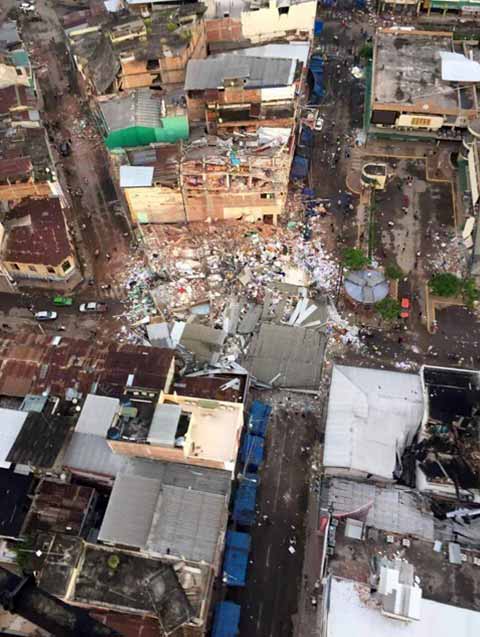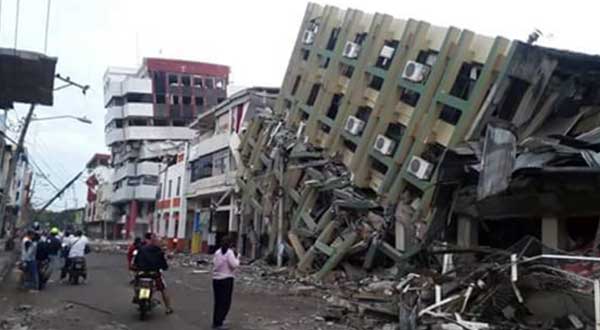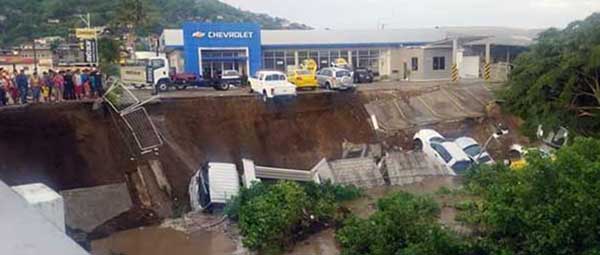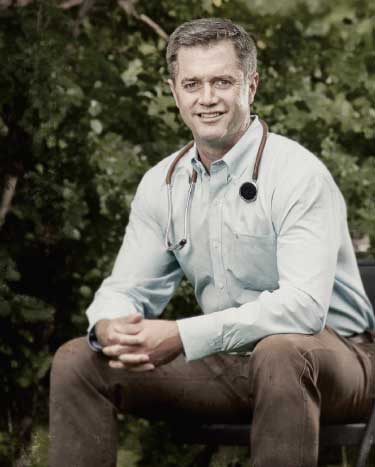“It’s been gut-wrenching.”
Dr. David Gaus ’84 describes the aftermath of the 7.8 magnitude earthquake that rocked Ecuador the evening of April 16 with a stark sense of the human impact involved. Gaus is the founder and CEO of Andean Health and Development (AHD), which operates two hospitals serving indigent populations in the country.
David Gaus ’84, founder and CEO of Andean Health and Development (AHD)
“We saw a young mother come in,” Gaus said. “She was at church when the quake hit. The church began to crumble, and she instinctively dove on top of her young daughter to save her. Concrete fell on top of her, causing three fractures in her neck. She will likely be paralyzed, but she considers it a miracle because her daughter was saved.”
Such are the stories playing out at AHD’s facilities, where the fact the doors remain open is perhaps a small miracle of its own. Hospital Pedro Vicente Maldonado is a 17-bed facility in a rural town of the same name. The other facility, Hesburgh Hospital, named after the late Notre Dame president emeritus Rev. Theodore Hesburgh, C.S.C., is a 60-bed facility located in the city of Santo Domingo. Both are roughly 75 miles from the epicenter of the quake, yet they remained largely unscathed even while other structures around them were affected. Closer to the epicenter, in the hard-hit provinces of Esmeraldas and Manabí, government hospitals became structurally unstable or collapsed.
“We became part of the first response,” Gaus said. “By the morning after the quake, we received the first wave of patients, most of which were trauma patients with broken bones, blunt trauma to the extremities and chest. That continued for about 48 hours.”



The patients arrived often after harrowing journeys. Large sections of infrastructure were destroyed in the quake. In some cases, patients were carried on makeshift stretchers over collapsed roadways to waiting “ambulances” of pickup trucks or other modes of transport. Some of the staff of the AHD facilities reside in some of the hardest hit areas, and helped bring patients to the hospitals. Their presence among the indigent population gave the AHD staff a clearer picture of the toll of the disaster. While initial reports out of Quito placed the death toll at near 100, Gaus said his staff estimated very early the toll would be at least five times that figure. Several days later, their prediction proved correct.
“The reason we knew that was we have a residency program, and a lot of those docs come from the two provinces that were hit,” Gaus said. “We immediately mobilized our docs, nurses and attending physicians to go back to these smaller communities that they know very well, and that’s how we got our reconnaissance.”
Four days after the quake, the initial influx of victims to Hesburgh Hospital and Hospital Pedro Vicente Maldonado had slowed, while Gaus and the staffs at the facilities prepared for the wave of post-quake medical issues, and the work beyond the current crisis.
“...global health is really the day-to-day challenges of providing health care to underserved populations.”
“People ask what global health is, and I usually start off by telling them what global health is not, Gaus said. “Even though the press likes to think about global health in terms of the next natural disaster that kills lots of people, global health is really the day-to-day challenges of providing health care to underserved populations.”
And in that mission, Gaus believes AHD has benefited from the unwavering support of Notre Dame alumni who serve on the board and contribute their time and resources to establishing an independent health care system in rural Latin America.
“I think the groundswell of support is a wonderful manifestation of academics translating to social justice.”
